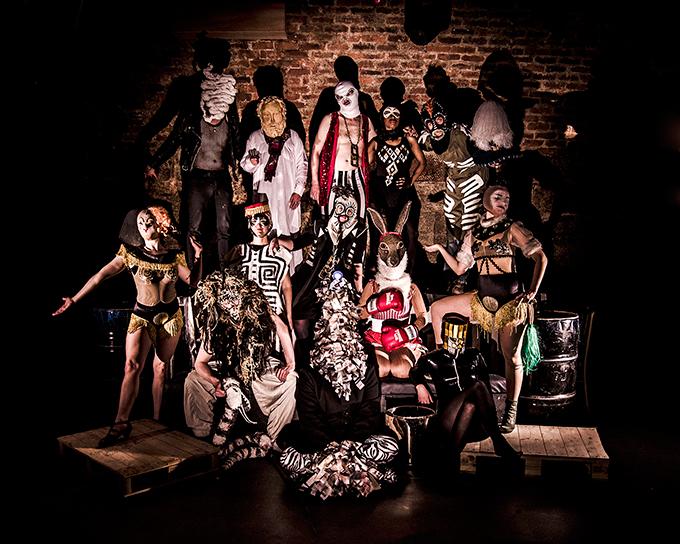
85A’s Dark Behaviour at The Arches
Ahead of their next performance Cargo, Camera… Action!, Central Station caught up with the Glasgow based sound/art/performance collective 85A.
When did 85A start?
Our first event was in 2008. We didn’t have a name until 2010. There’s been nineteen shows we’ve done together. We have a problem saying no…!
When we make work, especially with Chernozem, the film we made, the idea comes from a few people and then expands. In that case, we expanded it to make a theatre performance before the film had finished. Then we screened the film with another theatre performance around it. It’s almost like a season or something. Our audience gets really excited. They can see it and then come back and participate with it again. It allows them to experience the story or the thematic content in various ways by physically being part of it or watching it.
How did you come up with the name 85A?
It was on the submarine in one of our early shows. We were doing a show about a submarine and then we decided we needed a name and we looked no further than the name on our submarine. It’s the submarine’s ident.
Looking back, what do you think inspired you to start a collective?
We’ve never had so much time for reflection. We keep moving forward. Things just get thrown our way that are too exciting to say no to. It’s been consistently less shows and bigger shows but still about five a year. We do a summer season and we work on a London based circus each summer as well. So that’s another project we do together and we live together in different shapes and forms. It’s a family now!
How do you describe yourselves and what you do?
That’s a big question. We’re a multi-disciplinary artists collective. We work across disciplines and there’s generally, in no particular order, music, puppetry, masks and audience interaction. We like to work site-specifically and put on our own events. We work with film as well and a lot of us have a visual arts background but a lot of us have been moving gradually away from it in multiple directions.
We combine the forces of visual arts, design and music to create performative event based works that could almost be seen as durational. Often, they roll into a party so we can have a more focused performance which would then turn into a music event towards the end.
You often work with masks, costumes, and other disguises so how does anonymity relate to your work?
There’s a freedom to it and also a reaction to a lot of the current climate of arts, business and personal hype. Everything is attached to a face. People as well as artists seem to really be in a look-at-me phase, sharing everything and getting everyone to take a look at themselves. Often behind the mask or image, there’s not much. We’re trying to make a counterpoint to it, where we‘re a lot more secretive about who we are and the way we do things, but when people come to our event, there’s a lot of us. We’re very generous and there’s a lot of us to be with!
On the same note, you often ask your audiences to wear masks. How does this add to the performance?
It blurs the lines between the crew and the audience. The audience start to feel like they can act up, like they’re crew. Because you’ve got that anonymity, wearing a mask allows you to be something other than the face that you project. If you go to quite a lot of art shows or the pub, you can’t really relax. You have to keep this pretense up. If you have a mask on, you can do whatever you want and nobody can see it’s you. There’s a certain freedom within that.
Dark Behaviour looked like so much fun, can you tell us a bit more about your experience making it?
We’ve done about five masquerades now so it’s almost like we’re developing a bit of a scene. Each time, people experiment more with their costumes and masks and movement. We’ve really noticed the effort that people go through, especially the last two masquerades. People probably dress like this for other things, but now they’re really finding out about what we’re doing and using that as a platform for their own costume. The masks were great at Dark Behaviour. In Edinburgh the costumes were really good as well.
Do you have a core group of people you work with?
There’s twelve of us who are in an e-mail thread with each other. When we come to do projects, our numbers go up. We also have associate artists who we’ve been working with for about five years now who are growing with each project. We’ve been headhunting other artists that we want to work with, performers or people who can build etc. We’ve never advertised or asked for volunteers. We just kind of find people. You get fed if you work with us, and you get a patch or a t-shirt!
On your website, you call yourselves ‘cultural agitators.’ How are you disrupting the norms related to visual and contemporary art practice?
We’ve successfully removed ourselves from it. Before 85A, quite a few of us were involved in a gallery called Lowsalt, where we would organise group exhibitions. We were asking artists to collaborate with one another, to share a space, and we would always encourage a performative element on the opening night and really play to the event. Within that, we found each other as a group. Through being a gallery working mainly with solo shows, we got a really good response from the Arts Council and funders in general. We did GI a few times. We always gave too much, we would be given some funding and put on three giant shows, one gallery based, one all around the city, and then some inflatable sculptures which was also city wide.
We decided we wanted to work together as a group anonymously. Then suddenly, we were getting turned down from funding and we felt that the new direction we had chosen for ourselves wasn’t fitting with what was on offer for artists. We just decided to take it somewhere else and haven’t really looked back. We’ve ended up getting permission from so many other organisations whether it be NVA who asked us to create something for an urban food festival, or Govanhill Baths to do a music festival, music festivals outside of Scotland, film festivals.
There are a lot of multi-disciplinary visual artists in the fine arts scene, but their work is only multi-disciplinary to a point. That’s where a collective is different because there are people within that who themselves are working multi-disciplinarily and you’ve all got a different base or background and that allows the work to shape shift and become malleable. All of these elements create something that we’re quite happy to feel is outwith the bubble of visual arts.
We’re also independent in the sense that we are in control of all the logistics. We have vehicles, we can take over a space. We have all the equipment to put on a show, sound, video, lighting. We’re a production company so in that sense, it’s beyond multi-disciplinary.
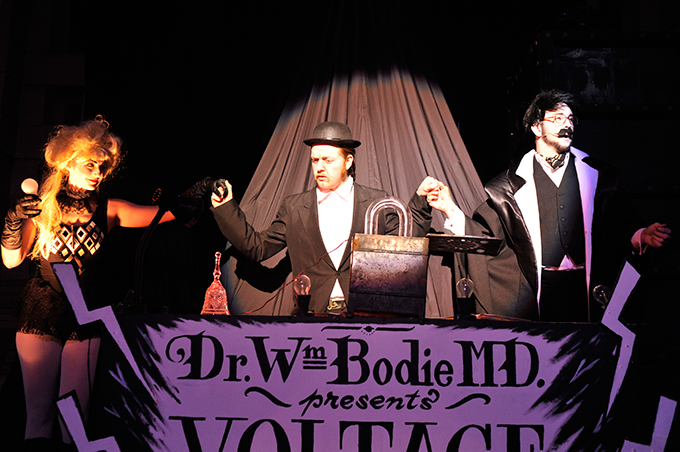
85A’s Voltage and Vitalism at The Kelvingrove Museum, Glasgow 2012
A lot of inspiration seems to come from German Expressionism and Victoriana, is there a reason you have a particular affinity to these and/or other periods?
Expressionism has been a big player in the aesthetics of a lot of our work which is down to one of our members who does all our graphics. It’s been a big influence. There’s a kinship beyond the stylistic element with the Weimar Republic and the Constructivists and times of political upheaval. There was a lot of interesting art being created back then.
The Victoriana theme of the Kelvingrove event was scientific times. That show was about electricity and the inventions were really exciting. They asked us to be part of an event that already had that overarching theme. We were making work to poke a stick at the ideologies that are so celebrated, like imperialism and make some work that was brought these quite interesting or slightly backwards thoughts to the forefront.
It’s not all about the past though. We’ve got other influences and they’re quite diverse. Industry, maybe in music or in film. It goes a bit beyond that. It’s not just artistic influence either. We’ve been working in festivals quite a lot, music festivals and arts festivals in the outdoors. You do see quite a lot of something on another scale that mixes all of that and that’s another influence. People who are travelling and parties have brought in autonomous elements like subcultures that have taken hold in the festival scene in the UK.
Do you have specific emotions or reactions that you’re trying to invoke from the outset?
There are elements within each show where sometimes there might have been an undercurrent from the start or they might protrude later on as quite an obvious statement that you could read something into but it’s never been forced.
We think of ourselves as the audience and what we would like to do. Whether we’ve been whizzed around on a ghost train or ‘yeah! let’s get crushed by some kind of god of the party’. I think we come at it from a participant’s point of view and through devising it, you feel it.
The drama and the emotion happens. There’s ten of us talking like this. You feel the emotion in the room. You feel the response. If we’re talking about something like The Orzel, it equates to a certain chapter in history, World War II. This is not really the kind of message that we feel passionate about more than any other. We like the story and the treatment and we want to stay true to the intention of the piece. We pick up the emotions as we go along.
We do say something like, “we’re going to do a rain or shine show and it’s going to be for everybody. All Ages.” There is a difference but within that you can still have a somber emotional context. We think about our audience, whether we’re given an audience or we’re going out to find one. There are emotional political elements within everything we do because that’s the kind of people we are. We’re not going to not say things but we maybe will say them in a different way to a family audience. We’re not going to put them through some horrific experience if there are children there. We’ve always kept hold of that.
Even when we’re at a festival and it’s fun during the day, we’re still crushing people, we’re still sacrificing people because that’s the humorous grotesque stance we have. It’s about not taking everything so seriously but it is about having something to say. There’s an absurdity in what we do. I think that’s there as well and sometimes it can be really dark but tinged with humour so it’s never overwhelmingly dark. We’re not just jesters, we’re serious in our absurdity.
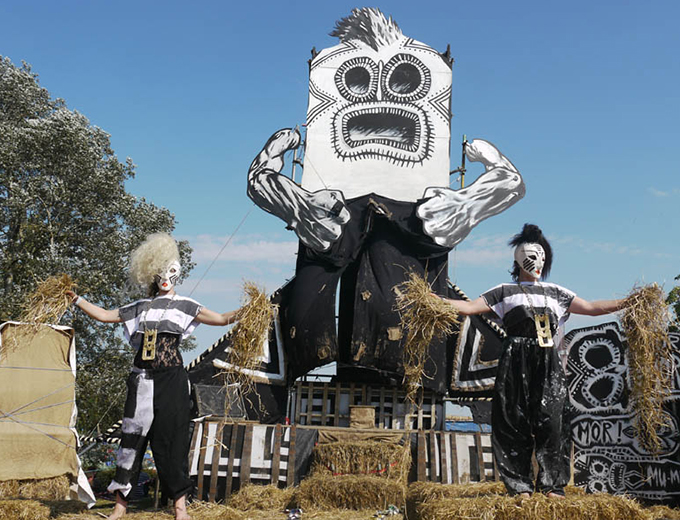
85A’s The Crusher at Secret Garden Party Festival in Cambridge
With so many different elements going into performances, how do you control them when the performance is underway?
There are roles that are formed within that. We stage manage each other and people will head up departments for props or costumes or food, driving. Experience of working together also builds that and working with so many people.
We’ve experienced madness and anarchy. When you’re at a party, a festival or a demo or self-organised you become familiar with the crowd’s reaction. You want to encourage people to let go but you want to keep things safe. These are the rules and regulations of such spaces and technical things that you should or shouldn’t do. At the same time, you know that you need to be able to get your audience to feel that it’s totally mad but really it isn’t. You need to have experience of both worlds, the entertainment industry and the world of total chaos and seeing how far you can connect the two and have them coexist in one space. If it’s mega official and everything has got to be done by the book, we’re really good at doing risk assessments now and knowing regulations. Some other place they might not care so much and we can do the same show with four times less effort because there is less paperwork.
We work a lot with performers where we’re improvising.I think a lot of that comes through trust and practise together. If you can improvise together and discuss and have a laugh and say stupid things and then party together and then create work, there is a trust. Yes, you have an overall direction or scene but within that there will be a few improvised elements that you kind of give to people and they do great work. That’s why we all work together.
Stay tuned for more from 85A next week when they talk about Cargo, Camera…ACTION!
More: Website
Photos courtesy of 85A. Interviewed by Madeleine Schmoll.
//////
See more arts collectives we’ve featured on the site. Think we should feature your collective? Get in touch.


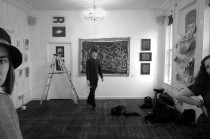

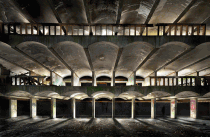









Comments